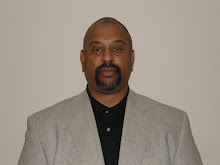The benefit to using federally regulated 401k, 403b, and 457 investment plans offered by your employer is that a portion of your earned income can be placed in these plans on a tax-deferred basis. This allows workers to invest about one-third more than they could have otherwise invested in non-tax-deferred plans offered by other financial institutions. Federal law allows employers to let you invest thousands annually in each plan. You would pay no income taxes on this money until you withdraw it from the account. This gives a greater amount of money the opportunity to experience great compound growth over a few decades of investing, which is usually far better than earning the same percentage growth on a far smaller amount of dollars deposited in a non-tax-deferred plan.
These accounts generally include an array of investment choices such as stock, bond, and fixed-interest funds. In most plans you can select a variety of vehicles that allow you to diversify deposits and accumulations. Many employers will match your investment to a certain maximum level like $2,000 annually or 6% of annual pay. This is free money you won’t get until you invest through these plans. After you build your initial $1,000 emergency fund, it is usually best to get the employer match no matter where you are in the Seven Steps process, unless you cannot possibly pay off your debt within the next year or two by reducing unnecessary expenses or by initiating additional income via second jobs or entrepreneurial endeavors.
A two-dollar match for each dollar deposited gives you an automatic 200% return on your deposit. A dollar match for each dollar deposited gives you 100% return on your deposits, a fifty-cent match for each dollar deposited gives you a 50% return, and a twenty-five cent for each dollar deposited gives you a 25% return. Over the period of investing, this provides for growth on matched dollars that is far greater than you can get from non-matched dollars.
Until you eliminate all non-mortgage debt it is usually best you do not put in these accounts more than the amount necessary to get the employer’s maximum match. Thus, all other disposable dollars can be put toward debt elimination, which will save you from consequences of having loan finance charges that continually far exceed what you could earn in the investment markets, such as debt bondage that:
*Makes you eventually stop investment deposits.
*Causes you to take out loans and/or withdrawals from the account before you retire (for which you might pay extra taxes and a penalty) to try and pay crushing debts and monthly household expenses.
*Severely disrupts or eliminates your ability to build wealth for retirement years, future endeavors, and abundant giving.
*Makes you have to work many more years than you really wanted at jobs you no longer have passion for, because you have not built a sufficient nest egg to live comfortably without an employer dictating your efforts, time spent, and earning power.
*Puts you in the position of living in poverty in your senior years.
You will pay an ordinary income tax rate and 10% penalty for early withdrawal before 59.5 years of age, So, it is costly to withdraw money from the plans. This should keep you from squandering money put in during earning years so you have a chance at building wealth needed to maintain abundant giving, a comfortable lifestyle during retirement, and future entrepreneurial endeavors. Most plans allow you to take a loan against your account up to approximately $50,000 or 50% of your accumulation, whichever is smaller. A downside to doing this is, within five years, you must pay off the loan using after tax dollars and that money will be taxed again when you withdraw it in future years (which means you’re taxed twice for the same money). Also, if you lose your job or are laid off then you must immediately repay the loan or it becomes income to you and at tax filing time you will have to add it to your income and pay taxes and penalty on it.
In both the withdrawal and loan scenarios, for decades, you lose compound growth on the money borrowed that likely would have provided far greater wealth accumulation if the money was left in the account. Unfortunately, about 50% of account holders withdraw and/or borrow from their accounts and some do so several times during their working years. This seems to be one reason why many accounts show meager investment accumulations for many people 55 years and older.
Let’s correct this shortcoming by adhering to the scriptural principle that shows believers continually engage a pattern of investing for growth, which allows them to continually give abundantly and carry out the purposes to which the LORD calls them. Remember, a wise man builds and maintains treasuries, whereas a foolish man spends everything he gets.
Please pray for this ministry, email me with any questions, and contact me to speak at your business or ministry conference or workshop. May the LORD bless you richly as you follow His plan!
Proverbs 11:14, Ecclesiastes 11:2, Matthew 25:14, Luke 19:13
Please forward these bondage-breaking articles to other people who can use helpful insight!
You can find books authored by Randy Parlor and Karen Parlor at
https://www.amazon.com/s?k=Randy+Parlor&i=stripbooks&dc&qid=1573343045&ref=sr_nr_i_1
https://www.amazon.com/s?k=Karen+Parlor&i=stripbooks&ref=nb_sb_noss
You can find many other MoneyWalk articles on Facebook at https://www.facebook.com/randy.parlor by viewing Notes in the More menu on the right side of the computer screen
You can connect with Randy Parlor on
https://twitter.com/RandyParlor
https://www.linkedin.com/in/randyparlor/
You can also view and/or listen to MoneyWalk articles at https://www.youtube.com/channel/UCXnztOIesOKIrSd_H6c-8mQ

No comments:
Post a Comment